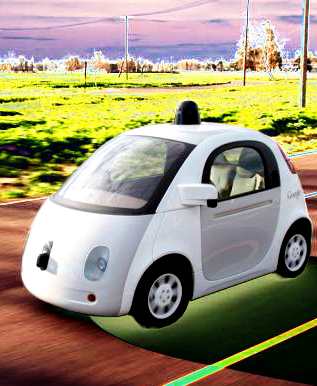Driverless decisions discussed
 New US guidelines cover the ethical decisions that driverless cars will have to make.
New US guidelines cover the ethical decisions that driverless cars will have to make.
There are a lot of instances in which an AI-controlled car will be forced to make a tough decision. For example, it may end up in a situation where it must choose between crashing into a loaded bus on one side of the road, or an individual person on the other.
The US Transportation Department has issued a new 15-point safety assessment for driverless car systems, hoping to out some bounds on the technology before it comes to fruition. It also seeks to create a structure within which individual states can legislate, to avoid ending up with a patchwork of rules and regulations across the country.
The guidelines propose judging driverless cars, which it refers to as “highly automated vehicles” (HAVs), by the following points:
- the vehicle's perception and response functionality
- how well the cars manage in case of technical failures
- data recording and information sharing capabilities
- user privacy
- security from hacking
But the regulators say they are keen not to stifle the development of the burgeoning technology, and so they want to work closely with large automakers and tech giants including Uber and Alphabet (Google’s parent company) to ensure a balance between safety and innovation.
The regulations do not cover every conceivable ethical dilemma, but instead encourages ethical algorithms be included in all self-driving vehicles.
“It may be that the safety of one person may be protected only at the cost of the safety of another person,” the guidelines say.
“Algorithms for resolving these conflict situations should be developed transparently using input from federal and state regulators, drivers, passengers and vulnerable road users.”
US President Barack Obama has endorsed driverless car technology in an editorial for The Pittsburgh Post-Gazette.
“Right now, too many people die on our roads — 35,200 last year alone — with 94 per cent of those the result of human error or choice,” Mr Obama wrote.
“Automated vehicles have the potential to save tens of thousands of lives each year. And right now, for too many senior citizens and Americans with disabilities, driving isn't an option. Automated vehicles could change their lives.”
Australia does not have a similar set of national guidelines yet, but managing director of independent road research agency Australia Road Research Board Gerald Waldron is not too worried.
“The South Australian Government has enacted legislation to support the trialling of automated vehicles and that's really got some of the elements of the sort of regulatory framework that we would be advocating,” he told the ABC.
“I'm quietly confident that regulation would be adopted nationally with not much modification, hopefully only improvements. It puts Australia in not too bad a place.”
The National Transport Commission has been leading up to a national trial and deployment of automated cars, and is likely to have looked at the US guidelines.
“It's happening more quickly than we probably would have thought even a year or so ago and so it's timely to be considering and working on getting national regulation in place,” Mr Waldron said.








 Print
Print